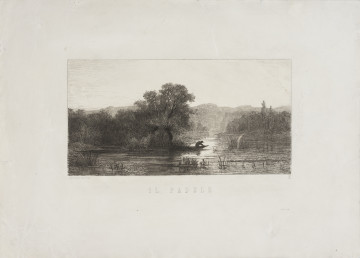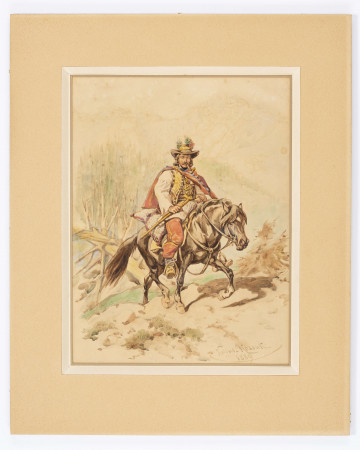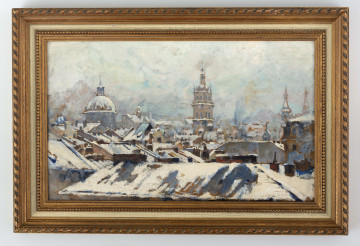
Il Padule | Swamp
1870
National Museum in Szczecin
Part of the collection: Polish landscape painting (19th–1st half of the 20th c.)
Henryk Weyssenhoff enjoyed great recognition and popularity at the turn of the 19th and 20th centuries as an excellent landscape painter and venerator of the Polish countryside. He came from an old noble family settled in Livonia. The whole family was sent into exile for his father's participation in the January Uprising. On his way to Siberia, little Henryk was given drawing lessons by Józef Kraszewski's brother. After returning to Poland, Weyssenhoff attended Wojciech Gerson's drawing school in Warsaw. Having been persuaded by Henryk Siemiradzki, he took up studies at St Petersburg's Academy of Fine Arts and then, following the example of many Polish artists of the second half of the 19th century, in Munich, where he became friends with Alfred Wierusz-Kowalski, among others. He regularly travelled to Paris, where he learnt about current trends in European art. He lived on his family’s estate Russakowicze in Belarus. His fascination with the beauty of this region found expression in his works, which are almost epic stories about local nature. He liked to recreate the landscapes seen at different times of the year and day: backwoods, forest wilderness, retreats with manor houses, cemeteries, vast meadows, swamps. In the paintings, nature is not disturbed by human presence, and it retains something of its original dignity; only animals such as dogs, bears, elk and grouse appear.
The painting Łoś na trzęsawisku [Moose on a Moor] is an example of a lyrical, melancholic representation of a fragment of Polesie nature. The artist returned several times to the motif of a marshy peat bog with pdòky (haystacks on stilts) covered with morning mist, on which the moose wanders (Łoś [Moose], Tęsknota I [Longing I], Tęsknota II [Longing II], Przeczucie [Foreboding]). Weyssenhoff brought out the atmosphere of his realistic compositions, skilfully using subtle drawing and refined colour, enriching his depiction of nature with the experience of the Impressionists. By his contemporaries he was referred to as a master of the atmospheric landscape. His landscapes often conceal symbolic and metaphysical content referring to national and patriotic associations (Cemetery [Cmentarz], Przeczucie [Foreboding], Ślad [Trace]).
It is worth remembering that Weyssenhoff was also a valued illustrator – many well-known artists of the time worked in this genre. In his edition, an example of this art is a series of illustrations to the borderland novel Sobol i panna [Sable and Miss] by the painter's brother, Józef.
Bożena Kasperowicz
Author / creator
Dimensions
cały obiekt: height: 136 cm, width: 85,5 cm
Object type
painting
Technique
oil technique
Material
canvas, oil-based paint
Creation time / dating
Creation / finding place
Owner
The National Museum in Lublin
Identification number
Location / status

1870
National Museum in Szczecin

1889
National Museum in Lublin

1923
National Museum in Lublin
DISCOVER this TOPIC
Museum of King Jan III's Palace at Wilanów
DISCOVER this PATH
Educational path